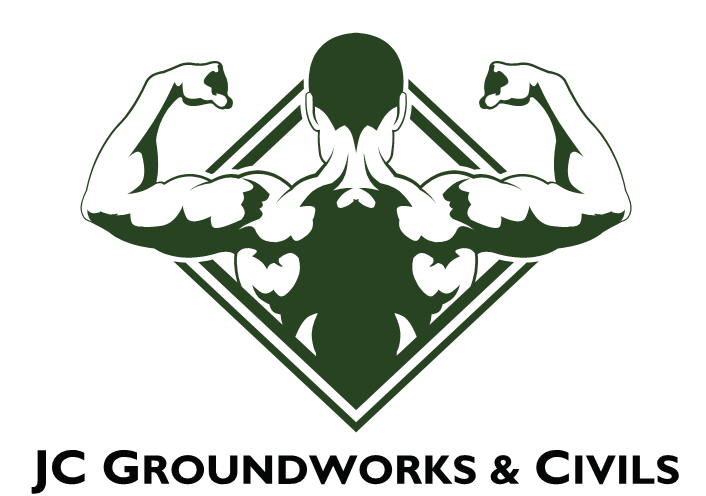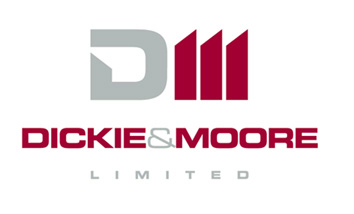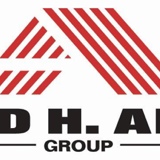Title Page
-
Document No.
-
Audit Title
-
Client / Site
-
Conducted on
-
Prepared by
-
Location
-
Personnel
Documentation & Site Files
-
Construction Phase H&S plan developed & being maintained. Inductions carried out & up to date. Site sign in/out sheets accurate. Site inspection records completed & up to date. Permits to work issued & correctly closed out
-
Score<br>
Method Statement & Risk Assessment
-
Method Statements & Risk Assessments site specific, relevant to current works, signed & dated by workforce, operatives inducted in RAMS and familiar with content. RAMS reviewed. Young persons risk assessment.
-
Score
Sub-contractors
-
Sub-contractors appointed have site specific RAMS in place, site induction completed, appropriate supervision, correct plant/equipment. Working safely in compliance with RAMS
-
Score
Training & Competence
-
Current & valid training records for site personnel in site files (SMSTS/ SSSTS/ CSCS/ CPCS/ ECS, Asbestos Awareness, PASMA, IPAF etc.)
-
Score
Welfare Arrangements
-
Welfare arrangements satisfactory. Suitable numbers chairs/tables. Drinking water on site. Means of preparing & heating food/drinks. Suitable number of toilets & hand washing facilities. Warm water for hand washing. Provision & stock of replacement consumables (toilet roll, hand towels, soaps etc.). Facilities clean & tidy. Rubbish bins. Smoking area
-
Score
Site security, signage & traffic management
-
Is site secure. Hoarding/ fences/ barriers in place, secure & in good order. Construction H&S signage posted at site compound and in work area. Informational signage in office & welfare area. Fire signage posted. Traffic management plan developed & up to date, travel routes clearly marked & segregation of pedestrians from vehicles
-
Score
Access/Egress & Housekeeping
-
Acess/egress routes clearly identified, free from obstruction, suitably lit, and in good condition. Housekeeping, cable management & material storage in good order to prevent slip/trip/strike hazards. Waste materials kept in good order & being regularly removed to skip. Control of dust.
-
Score
PPE & RPE
-
Suitable PPE identified in RAMS. Mandatory PPE being worn. Task specific PPE being worn where required. PPE/RPE suitable for task & in good condition. Face fit testing carried out for RPE
-
Score
Asbestos
-
Current asbestos survey report available & copy in site file. Asbestos warning notices posted for managed ACM's in work area (if relevant). Asbestos awareness training records in site file. Asbestos works carried out by authorised contractor - isolation of work areas, plan of work (incl. RAMS, training records, control measures, waste controls etc.) in place.
-
Score
Occupational health
-
Suitable controls in place for occupational health hazards, noise, vibration, dermatitis, respiratory, asbestos, lead, COSHH, leptospirosis, sharps/needles etc.
-
Score
COSHH
-
Have hazardous materials/substances on site been identified, COSHH assessments in place & operatives inducted in assessments. Are materials/substances being used & stored in compliance with assessment. Is correct PPE/RPE being used
-
Score
Manual Handling
-
Have manual handling activities been identified and are manual handling task risk assessments in place. Is there manual handling aids/equipment available (forklift, pallet lifter, trolley etc.). Do the operatives have suitable training/guidance/information to carry out manual handling task.
-
Score
First Aid & Accident Reporting
-
Is there suitable numbers of first aid trained persons on site. Is the first aid box accessible, and adequately stocked. Is the nearest emergency medical facility clearly identified. Have any accidents/incidents/near misses been reported. Are all incidents suitably investigated and learning outcomes communicated
-
Score
Fire Safety
-
Is there a site fire plan and is it suitable for current site environment. Are emergency routes clearly marked & free from obstruction. Is there a suitable means of raising a fire alarm. Are suitable numbers of fire fighting equipment on site, serviced and in good condition. Is suitable fire signage posted. Are all hot works being controlled by permit conditions. Are there any combustible materials/substances in the workplace. Have sources of ignition been identified. Have smoking risks been controlled. Is housekeeping in good order and risk controlled by preventing unnecessary build up of combustible materials (wood, dusts, cardboard, packaging etc.)
-
Score
Plant & Equipment
-
Is the correct plant/equipment being used for the task. Is there a risk assessment for use of the equipment. Is the plant/equipment in good order, no visible defects, have current test/inspection certification. Have the manufacturers recommended safety checks been carried out and recorded. Does the operator have the relevant training qualifications for using the plant/equipment
-
Score
Electrical Safety
-
Are safe lock off & isolation procedures in place. Have live circuits been identified and warning notices posted. Is all portable electrical equipment on site 110 volt. Has portable electrical equipment been PAT tested
-
Score
LOLER & Lifting
-
Is there a site specific lifting plan in place. Do all personnel involved in the lift have the relevant training & are copies of training records in the lifting plan. Does the plan consider site conditions/hazards and environmental hazards (I.e. Weather conditions etc.). Does all plant & lifting equipment (chains, slings, shackles etc) being used have a currently valid test certificate. Is the lifting zone secure from unauthorised entry (barriers, signage etc.). Is suitable monitoring & supervision arrangements in place. Has the load been clearly established and been cross checked with the safe lifting capacity of the lifting plant/equipment. Has a lifting briefing been held before commencement of operations and is a copy of the briefing record in the site file.
-
Score
Work at Height - Scaffolds & Mobile Towers
-
Has the scaffold/tower been designed & erected by a suitably competent & trained contractor (CISRS, PASMA) Is the scaffold being inspected at the relevant intervals and are records of inspections kept. Is the scaffold only being altered or amended by authorised & competent contractors. Is a scaf tag fitted & tag details up to date. Are there any visible defects on the scaffold. Are mobile tower scaffold being used with brakes locked, and outriggers fitted as per manufacturers recommendations. Is an emergency rescue plan in place.
-
Score
Work at Height - MEWP
-
Is the correct MEWP being used for the task. Is there a risk assessment for use of the MEWP. Is the MEWP in good order, no visible defects, have current test/inspection certification. Have the manufacturers recommended safety checks been carried out and recorded. Does the operator have the relevant training qualifications for using the category of MEWP being used. Is there an emergency rescue plan in place. Are safety harnesses fitted with fall restraint lanyards, in good order and being worn correctly. Have harness inspections been carried out and records kept of inspections.
-
Score
Work at Height - Ladders & Podiums
-
Are ladders the most suitable equipment for the task. Has a ladder permit been issued. Are ladders in good condition and free from defects. Are ladders being used correctly ( tied/footed, on a flat level surface, facing the work area, devices for preventing spread locked, top 3 rungs not used as work platform, no over stretching etc.)
-
Score
Work at Height - Fall Protection
-
Are edge protection handrails & toe boards in place, secure and in good order. Has safety netting been installed by FASET trained persons, and copies of current netting inspection records for all nets been provided. Is there an emergency rescue plan in place. Are secondary strike hazards present underneath safety nets ( scaffold standards, uprights etc.)
-
Score
Excavations
-
Is permit to dig in place. Have current services drawings been consulted and ground surveyed using CAT/Genny. Is CAT/Genny calibrated & is operator trained in use. Is excavation suitably battered/benched or shored, and in good condition. Are trench boxes required/in place. Is spoil located at a safe distance. Is there suitable means of access/egress. Is suitable edge protection in place. Is gas monitoring required. Are vehicles stop blocks required. Is there an inspection regime by a competent person and are inspections recorded. Is there a rescue procedure in place.
-
Score
General Comments
-
Audit Rating
Signatures
-
Auditor
-
I confirm my acceptance of this health and safety audit report
Audit Scoring Information
Audit Scoring System Information
-
Project Health & Safety Audits are regularly carried out during the construction phase of a project as an essential part of the Company health & safety performance monitoring arrangements.
Audits are carried out by an auditor walking the site and visually inspecting a sample of project documentation along with a representative from the site management team.
The findings of the audit report and audit scoring are discussed by the auditor with the site management team representative immediately on completion of an audit inspection.
Audits are scored as part of the health & safety performance measurement processes within the Company, in order to assist with the support, maintenance and development of Company health and safety systems, procedures and practices.
Scoring of audits and the content of audit reports is based on the experience and specialist technical knowledge of the auditor combined with an element of risk assessment.
Information collated from Audits is used to identify areas of strength and areas of potential improvement within the health & safety performance of Company systems & procedures, of individual members of staff, and of the Sub-Contractors within our supply chain, to satisfy aim of continual improvement in order to meet our target objective of Zero Harm and Zero Injury resulting from our works.
Audit Scoring Guidelines
-
The following guidelines are used by the auditor when allocating scores to each individual section of the audit:
Excellent (10 marks) - Awarded when the auditor is satisfied that all relevant criteria within the category have been met and that best practice is being achieved
Compliant (9 marks) - Awarded where conditions are very good, with no apparent shortcomings, but which could possibly be improved on to achieve best practice, or conditions which only lack a minor detail which is NOT likely to cause harm, injury or damage.
Minor Non-conformance (8 marks) - Awarded where minor corrective action is needed. A minor non-conformance is a standard or situation which could lead to harm, injury or damage and/or is contrary to health & safety law, legislation, industry best practice or Company/Client safety standards.
Note: Where more than 1 minor non-conformance is found in a section an additional mark can be deducted.
Non-conformance (6 marks) - Awarded where immediate corrective action is needed. A non-conformance is a standard or situation where there is a significant risk of harm, damage or injury, and/or where there are significant failings to achieve legal requirements or industry best practice.
Note: An auditor may deduct additional marks for a non-conformance incident, dependant on the auditors assessment of the potential severity of the incident, and the results of individual responses and potential contributing factors identified during the auditors initial on-site investigation of the incident.
Working out the scores
-
Once the scores are recorded in an audit, a performance factoring process is carried out.
This factoring process is designed to highlight the difference between good performance and areas for improvement.
To work out the overall performance score for a site, you need to do the following:
A) Add the scores for each individual section together
Maximum achievable score is 220 marks (i.e. 22 categories x 10 marks = 220)
Note: sections of the audit which are non-applicable to a site have a maximum score of 10 marks awarded to prevent inaccurate negative weighting of the audit.
B) Divide the total score by the number of categories in the audit (22 categories)
C) Multiply the answer by itself, to give the final score
Example 1:-
To explain the percentage factoring system in simple terms assume 10 categories have been scored in an audit and that a site has scored 9 marks in each category.
This gives an initial site score of 90 (10 categories x 9 marks = 90).
Without any percentage factoring being applied this score achieved would be 90
By dividing the total score by the number of categories scored (i.e. 90 marks divided by 10 categories we arrive at the answer of 9) and by then multiplying the answer by itself (i.e 9 x 9 = 81), the overall score has dropped by 9 points.
Example 2:- taking another example of an audit with 10 scored categories, each scoring 6 marks, the initial site score of 60, when the performance monitoring factor is applied, reduces to a final score of 36 (i.e. 60 marks divided by 10 categories = 6, then multiplying this answer by itself 6 x 6 = 36).
The application of a performance monitoring factor has significantly highlighted the poor performance of the this particular site.
Example 3:- a site has 10 categories scored, receiving marks of 10, 9, 9, 6, 9, 8, 8,10, 9 & 8.
This gives a total score of 86 which appears a reasonable initial mark.
However, once the performance monitoring factor is applied, the site score is 8.6 x 8.6= 73.96.
The non-conformance score of 6 marks awarded in one section has significantly reduced the overall score
Everyone must realise the impact on the overall audit score of any mark less than 9.
The lower the individual section score, the greater the potential risk, therefore the greater the impact on the overall score














